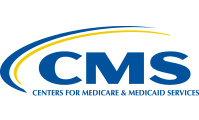Ohio Hospital for Psychiatry offers effective, comprehensive treatment for individuals struggling with late-life depression. Learn more about the signs and symptoms of late-life depression.
What is Late-Life Depression
Learn More About Late-life Depression
While depression is not a normal part of aging, many older adults succumb to late-life depression; which is defined as depression that occurs in senior adults. The clinical presentation of late-life depression tends to differ from that experienced by depressive disorders in younger age groups and can cause significant impairment in older adults. This is why friends and family must remain vigilant and aware of the signs that their older loved one may be experiencing this devastating type of depression.
Late-life depression may be more common than once thought due to the stresses that older individuals face, including increased medical complaints, grief over the loss of friends and loved ones, and financial concerns. The elderly often dismiss even the most severe episodes of depression as an acceptable part of the aging process and therefore, do not report symptoms or receive treatment. However, with the advancements in depression treatment, late-life depression is a very treatable mental disorder. When it is properly treated, the quality of life for older individuals can greatly improve.
Statistics
Statistics of Late-Life Depression
Late-life depression is far more widespread than once believed. Estimates indicate that over 2 million of the 34 million individuals living in the United States who are struggling with depression every year are, in fact, age 65 and older. This estimate denotes that about 6% of senior adults are coping with late-life depression. This estimate is even higher in older adults living in skilled nursing facilities or those in the hospital, although no concrete number is available. Unfortunately, many older adults are not educated about late life depression or, if they are, are fearful of disclosing their feelings due to the long-standing stigma of mental illness.
Causes and Risk Factors
Causes and Risk Factors for Late-Life Depression
Researchers of late-life depression believe that this serious disorder is not the result of a single cause, but rather late-life depression is the result of the complex interaction of genetic, physical, and environmental risk factors. Generally, the most commonly seen risk factors and causes for late-life depression include the following:
Genetic: Senior adults who have first-degree relatives, such as a parent, sibling, or child, who have been diagnosed with depression appear to have a greater risk for developing the disorder themselves, suggesting that there is a genetic component involved in its development.
Physical: Many older adults who have late-life depression have an array of complex, chronic medical conditions that require long-term treatment to manage. It appears that late-life depression can be triggered by physical illnesses such as cancer, heart disease, and arthritis, among others. Additionally, abnormal levels of neurotransmitters in the brain, most notably those involved in mood and emotion regulation, can increase the risk for this treatable condition.
Environmental: The sometimes constant, usually major life stresses and circumstances that accompany with older adulthood can trigger the onset of late-life depression in certain seniors.
Risk factors:
- Delayed, complicated grief
- Being female
- Increased social isolation
- Interpersonal conflicts with loved ones and family
- Physical disability
- Financial fears and struggles
- Use of multiple prescription medications needed for chronic health problems
Signs and Symptoms
Signs and Symptoms of Late-Life Depression
It is imperative that, if you or someone you love is facing a combination of the following symptoms for periods lasting longer than two weeks, professional help is sought out. Friends and family members can be instrumental in detecting this significant mental health disorder and can assist the older adult in seeking the treatment that he or she needs to manage late-life depression.
The signs and symptoms of late-life depression often diverge from those experienced in depressive disorders at other ages. Treatment is vital for late-life depression as the symptoms can be devastating and, in some cases, life-threatening. Symptoms of depression in the elderly may include the following:
Behavioral symptoms:
- Withdrawal from once-pleasurable activities
- Social withdrawal
- Pacing or fidgeting
- Extreme tearfulness
- Decreased ability to care for self
Physical symptoms:
- Significant change in appetite or weight
- Psychomotor retardation or agitation
- Physical pains without any discernable reason
- Gastrointestinal symptoms
- Headaches
- Insomnia or hypersomnia
- Fatigue or reduction in energy
Cognitive symptoms:
- Thoughts of death or wanting to commit suicide
- Decreased ability to think clearly
- Poor concentration
- Indecisiveness
- Memory loss
Psychosocial symptoms:
- Sadness
- Feelings of worthlessness; as though the best years are behind him or her
- Increased irritability and agitation
- Anxiety
- Anger
- Feeling hopeless
- Inappropriate feelings of guilt
- Suicidal ideation
Effects
Effects of Late-Life Depression
Unfortunately, senior adults tend to be less likely to report feelings of depression and obtain treatment for mental illnesses. If left undiagnosed or untreated, older adults with late-life depression have a greater risk for developing negative effects as a result of the disorder. Some examples of these effects may include:
- Worsening emotional well-being
- Worsening of chronic physical illnesses
- Increased disability
- Major psychiatric distress
- Substance abuse
- Suicidal thoughts and behaviors
Co-Occurring Disorders
Co-Occurring Disorders of Late-Life Depression
Depression in older adults often occurs with other mental health conditions. Some of the most common conditions that co-occur include both comorbid medical conditions and co-occurring mental health disorders and include:
- Anxiety disorders
- Personality disorders
- Parkinson’s disease
- Coronary artery disease
- Dementia
- Schizophrenia
- Stroke






